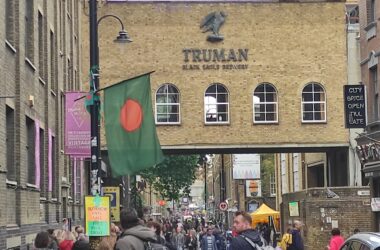Big Ben, the clock tower of the Palace of Westminster, is one of the most recognizable landmarks in London, and indeed, the world. Standing tall at 96 meters, this impressive structure has been an integral part of London’s skyline for over 150 years. The iconic chimes of Big Ben, ringing out every hour, have become a symbol of British tradition, history, and culture. In this article, we will explore the history, architecture, and significance of this British icon.
History of Big Ben
The Palace of Westminster, which houses the Houses of Parliament, has a long and fascinating history. The original palace was built in the 11th century, but it was destroyed by a fire in 1834. The only surviving part of the original palace is Westminster Hall, which dates back to the 11th century. The current palace was designed by architect Charles Barry and was completed in 1870.
One of the most distinctive features of the Palace of Westminster is the clock tower, which is officially known as the Elizabeth Tower. The tower was originally called the Clock Tower, but it was renamed in 2012 in honor of Queen Elizabeth II’s Diamond Jubilee. The tower is also commonly referred to as Big Ben, which is actually the nickname of the tower’s largest bell.
The idea for the clock tower came about in the mid-19th century when it was decided that a clock should be installed in the new Palace of Westminster. The clock was to be the largest and most accurate in the world at the time, and a tower was needed to house it. The design for the tower was the result of a competition, and it was won by architect Augustus Pugin. However, Pugin passed away before the tower was completed, and the project was taken over by Charles Barry.
Construction of the tower began in 1843 and was completed in 1858. The clock itself was designed by Edmund Beckett Denison and was installed in 1859. The tower was officially opened on May 31, 1859, and the clock began chiming on July 11, 1859. Since then, the clock has chimed every hour, except for a few brief interruptions during World War II.
The architecture of Big Ben
The Elizabeth Tower is a masterpiece of Victorian Gothic architecture. The tower is 96 meters tall and is built of brick and limestone. The tower is adorned with ornate carvings, and the four clock faces are made of opal glass. The clock faces are 7 meters in diameter, and the minute hands are 4.2 meters long. The clock’s dials and hands are so large that each numeral is over 60 centimeters tall.
The tower is also home to a spiral staircase that leads up to the clock faces and beyond. In total, there are 334 steps to the top of the tower. At the top of the tower, there is a belfry that houses the tower’s five bells, the largest of which is Big Ben. Big Ben is 2.2 meters tall and weighs over 13 tonnes. The bell is named after Sir Benjamin Hall, who was the commissioner of works at the time the tower was built.
Significance of Big Ben
Big Ben is not just a clock tower; it is a symbol of British tradition, history, and culture. The chimes of Big Ben have been heard around the world and are instantly recognizable. The clock has become a landmark not just in London, but in the entire world. The tower has appeared in countless films, television shows, and other media, cementing its place in popular culture.
But the significance of Big Ben goes beyond its cultural impact. The clock has played an important role in the history of London and the United Kingdom. The clock tower was built during the Victorian era, a time of great industrial and technological progress. The tower was a symbol of the technological prowess of the British Empire, and the clock itself was a testament to British engineering.
The chimes of Big Ben have also played an important role in the history of London. The clock has been used to mark significant events, such as the end of World War II and the beginning of the new millennium. The clock’s chimes are also a familiar sound for Londoners, marking the passage of time and providing a sense of continuity in a rapidly changing city.
In recent years, the tower has undergone a significant renovation to ensure its continued operation and to restore it to its former glory. The renovation included the installation of a new clock mechanism, the replacement of the tower’s roof, and the restoration of the tower’s stonework. The renovation was completed in 2021, and the tower is now ready to continue its important role in the history and culture of London.
Visiting Big Ben
Visitors to London can take a tour of the Houses of Parliament, which includes a visit to the Elizabeth Tower. The tour includes a climb up the spiral staircase to the top of the tower, where visitors can enjoy stunning views of London and hear the chimes of Big Ben up close.
However, it is important to note that the tower is currently closed for tours due to ongoing COVID-19 restrictions. Visitors should check the official website of the Houses of Parliament for the latest information on tour availability and safety protocols.
Conclusion
Big Ben is an iconic British landmark that has played an important role in the history and culture of London and the United Kingdom. The tower’s impressive architecture, historic significance, and cultural impact make it one of the most recognizable and beloved landmarks in the world.
As London continues to evolve and grow, the chimes of Big Ben serve as a reminder of the city’s rich history and enduring traditions. Whether heard in person or from afar, the chimes of Big Ben will continue to resonate with people around the world for generations to come.
Similar Articles
Frequently Asked Questions About Big Ben
As one of the most recognizable landmarks in the world, Big Ben generates a lot of interest and curiosity. Here are some frequently asked questions about Big Ben:
- What is Big Ben?
Big Ben is the nickname for the Great Bell of the Clock at the north end of the Palace of Westminster in London, also known as the Elizabeth Tower. The tower and clock are often referred to as Big Ben, but the nickname actually only applies to the bell.
- When was Big Ben built?
Big Ben was completed in 1859, as part of a larger construction project to rebuild the Palace of Westminster, which had been destroyed in a fire in 1834.
- How tall is Big Ben?
The Elizabeth Tower, which houses Big Ben, is 96 meters (315 feet) tall. The clock face has a diameter of 7 meters (23 feet) and the hour hand is 2.7 meters (9 feet) long, while the minute hand is 4.3 meters (14 feet) long.
- How does the clock work?
The clock is driven by a pendulum, which swings once every 2 seconds. The clock mechanism is connected to the dials on all four faces of the tower and is powered by a set of weights, which are wound up by hand three times a week.
- How accurate is Big Ben?
Despite its age, the clock is incredibly accurate, with an error rate of only a few seconds per week. The clock’s accuracy is maintained by a team of dedicated clockmakers, who regularly inspect and maintain the clock mechanism.
- Can you visit Big Ben?
Yes, visitors can take a tour of the Houses of Parliament, which includes a visit to the Elizabeth Tower. However, the tower is currently closed for tours due to ongoing COVID-19 restrictions.
- What is the history behind the name Big Ben?
The nickname Big Ben is thought to have come from Sir Benjamin Hall, a politician and civil engineer who oversaw the construction of the tower. However, there are also other theories about the origin of the name.
- What is the significance of the chimes of Big Ben?
The chimes of Big Ben have played an important role in the history of London. The clock has been used to mark significant events, such as the end of World War II and the beginning of the new millennium. The clock’s chimes are also a familiar sound for Londoners, marking the passage of time and providing a sense of continuity in a rapidly changing city.
- How often does Big Ben chime?
Big Ben chimes every hour, on the hour. The chimes consist of four quarter chimes, followed by the number of chimes corresponding to the hour.
- How loud are the chimes of Big Ben?
The chimes of Big Ben can be heard up to 8 kilometers (5 miles) away on a clear day. The chimes are approximately 118 decibels at their loudest, which is similar to the sound of a rock concert.
- Has Big Ben ever stopped working?
Big Ben has stopped working on several occasions throughout its history. The clock was stopped for a few days in 1949 due to a fault and was also stopped for several months in 1976 for repairs. More recently, the clock was stopped for several years during a major renovation of the tower.
- How long did the renovation of Big Ben take?
The renovation of Big Ben and the Elizabeth Tower began in 2017 and was completed in 2021. The renovation included the installation of a new clock mechanism, the replacement of the tower’s roof, and the restoration of the tower’s stonework.
- Can you hear the chimes of Big Ben online?
Yes, the chimes of Big Ben can be heard online via live streams and recordings. However, the chimes are copyrighted and cannot be used without permission.
- Is Big Ben the largest bell in the UK?
No, Big Ben is not the largest bell in the UK. The largest bell in the UK is the Great Paul, which is located in St. Paul’s Cathedral in London. The bell weighs over 16 tons and was cast in 1881.
- Is Big Ben open to the public?
The Elizabeth Tower, which houses Big Ben, is open to the public for tours. However, the tower is currently closed for tours due to ongoing COVID-19 restrictions. Visitors should check the official website of the Houses of Parliament for the latest information on tour availability and safety protocols.









